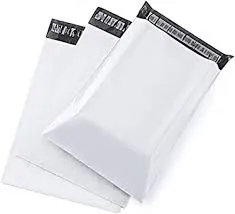soft pvc film
The Versatility and Benefits of Soft PVC Film
Soft PVC film is a remarkable material that has gained substantial popularity across various industries due to its versatility and highly adaptable nature. Unlike its rigid counterpart, soft PVC, or polyvinyl chloride, is characterized by its flexibility, durability, and excellent adaptability, making it an optimal choice for a multitude of applications. This article explores the composition, properties, and varied applications of soft PVC film, alongside its benefits and environmental considerations.
Composition and Properties
Soft PVC film is composed of polyvinyl chloride resins that have been blended with plasticizers, which are added to enhance the flexibility and workability of the product. The plasticizers, such as phthalates or non-phthalate alternatives, allow the film to be soft and pliable while maintaining its structural integrity. This film can be manufactured in various thicknesses and can be transparent, translucent, or opaque, depending on specific requirements.
One of the most significant properties of soft PVC film is its resistance to moisture, chemicals, and UV radiation, ensuring longevity even in demanding environments. Furthermore, the film is easy to clean and can be laminated for additional durability, making it a practical choice for applications that require longevity and resistance to wear and tear.
Applications in Various Industries
Soft PVC film is widely used across several industries, reflecting its adaptability and effectiveness.
1. Packaging The packaging industry extensively uses soft PVC film for its ability to form seals that protect products from moisture, dust, and contaminants. It is commonly found in food packaging, pharmaceuticals, and consumer goods, providing a transparent view of contents while offering protective qualities.
2. Medical Supplies In the healthcare sector, soft PVC film is employed in the production of medical devices and packaging solutions. Its inert nature ensures that it does not react with medications, making it an ideal choice for packaging sterile medical supplies.
3. Textiles and Upholstery In the fashion and furniture industry, soft PVC film is used for creating faux leather and protective coverings. Its ability to mimic the appearance of leather while being more affordable and easier to clean has made it popular for clothing, upholstery, and accessories.
soft pvc film

4. Construction The construction sector utilizes soft PVC film for a variety of applications, including window films, roofing membranes, and siding. Its waterproof and UV-resistant properties make it an excellent choice for outdoor applications where weather resistance is crucial.
5. Signage and Displays Advertisers and retailers often use soft PVC film for banners, signs, and displays, taking advantage of its ability to be printed on and formed into various shapes and sizes for effective marketing campaigns.
Benefits of Soft PVC Film
The numerous benefits of soft PVC film contribute to its widespread use. One major advantage is its cost-effectiveness, providing an affordable solution without sacrificing quality. Additionally, its lightweight nature makes it easier to transport and handle compared to alternative materials.
Moreover, soft PVC film is highly customizable, offering a range of colors, finishes, and textures to meet specific aesthetic and functional needs. This adaptability, combined with its strong resistance to weathering and abrasion, ensures that products made from soft PVC film stand the test of time.
Environmental Considerations
While soft PVC film presents many advantages, it is essential to address environmental concerns associated with its production and disposal. PVC production involves the use of fossil fuels and can generate harmful toxic emissions. However, advancements in technology have led to the development of more environmentally-friendly production methods.
Additionally, the recycling of PVC film is becoming increasingly viable, with initiatives aimed at reusing and recycling waste materials. As industries and consumers grow more conscious of their environmental impact, the focus on sustainable practices will redefine how materials like soft PVC film are produced and utilized.
Conclusion
Soft PVC film stands out as a versatile and valuable material that finds application in numerous industries, from packaging to construction. With its excellent properties, cost-effectiveness, and adaptability, it offers solutions that meet a variety of needs. Future developments in eco-friendly production and recycling processes will further enhance its appeal, ensuring that soft PVC film remains a key player in the materials market while contributing to a more sustainable future.
-
Unlock Freshness with Premium Food Wrap RollNewsJun.04,2025
-
Smart Shipping Starts with the Right Mailing BagNewsJun.04,2025
-
Shine and Protect with OPP Bag PackageNewsJun.04,2025
-
Revolutionize Retail Packaging with T Shirt BagsNewsJun.04,2025
-
Elevate Waste Management with the Right Trash BagNewsJun.04,2025
-
Deliver Smarter with High-Quality Bubble MailerNewsJun.04,2025
-
Have the freedom of customizing your custom mailers any way you want! Our dedicated packaging support will help deliver you the mailing experience you need to elevate your shipping experience to the next level! Start making a strong impression on your customers and stand out from your competitors! -
LIYA uses high quality raw materials which directly purchased from large enterprises domestic and overseas such as PetroChina, Sinopec, Sabic, Equate, ExxonMobil, Dow Chemical, Total, and Borouge, ensuring the price advantage and quality of the raw materials. -
LIYA uses high quality raw materials which directly purchased from large enterprises domestic and overseas such as PetroChina, Sinopec, Sabic, Equate, ExxonMobil, Dow Chemical, Total, and Borouge, ensuring the price advantage and quality of the raw materials.





